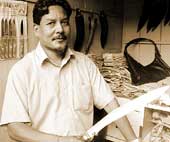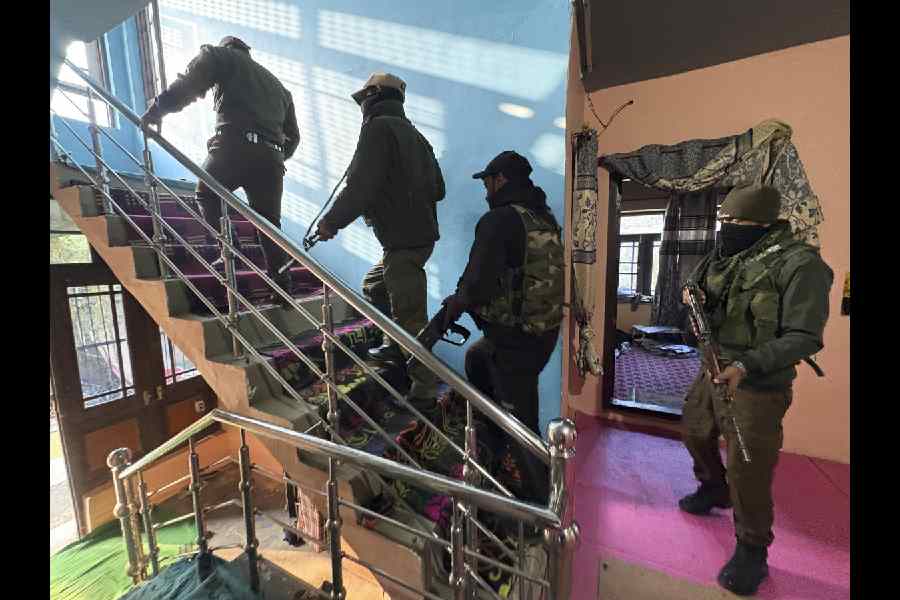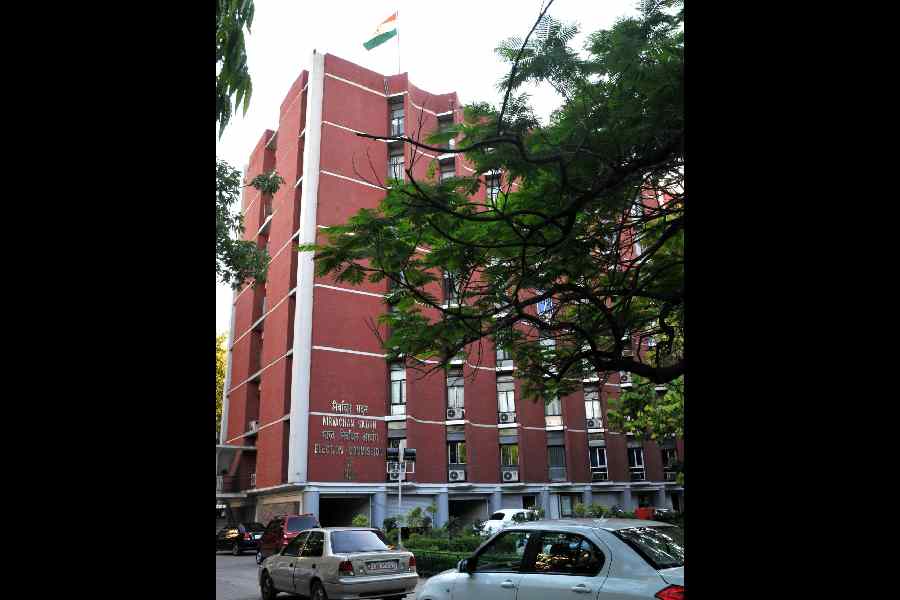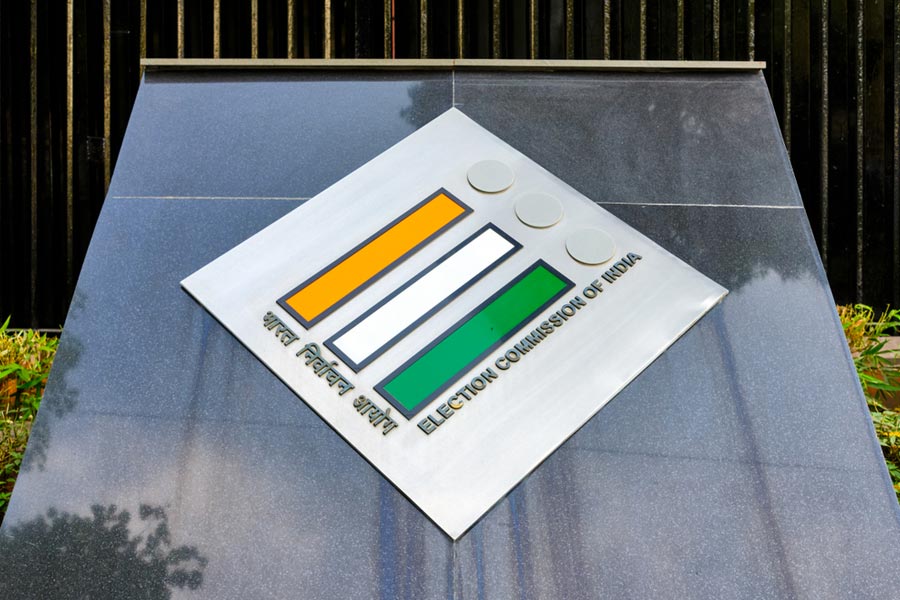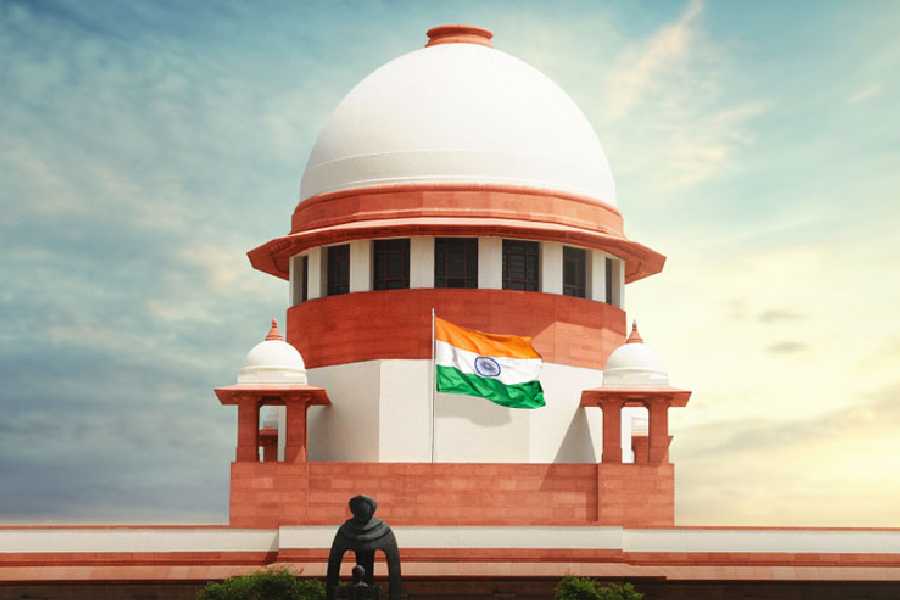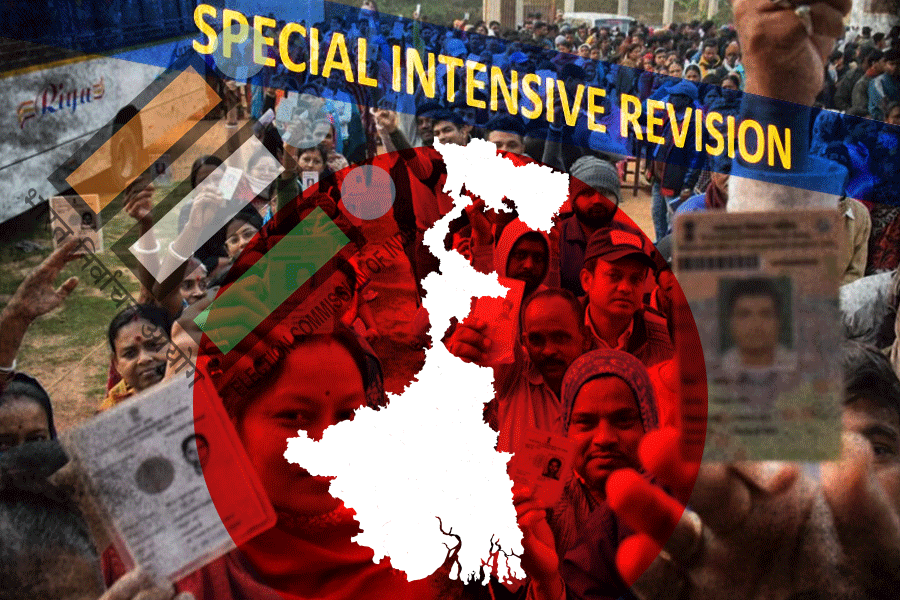 |
| Last of the sellers? Bir Man Singh at his khukuri shop in Darjeeling, the only one in the Hill town. Picture by Suman Tamang |
Khukuri ? an integral part of the Gorkha culture ? is not only losing its appeal within the community, but also struggling for its existence, as is evident in Darjeeling.
Making it to the Feluda series (the suave sleuth created by Satyajit Ray) or being occasionally featured in Hollywood blockbusters have hardly helped the carved weapon sustain its popularity. Once considered an extended arm of a Gorkha warrior, the weapon has now lost its glory, with the only khukuri shop at Chowk Bazar in Darjeeling hardly attracting customers. Even the number of artisans in the Hills and their skill are witnessing a steady decline.
?Most of the young people do not even know of the different varieties of khukuris available. If they ask for a particular kind, I can easily pass off another in its place and they would not be able to tell one from the other,? said Bir Man Singh, the proprietor of the shop. Khukuris come in different shapes and sizes, usually named after the shapes of leaves, like shirupatha, baspatha or the slightly heavy buduna. The strength of the weapon does not lie in its weight but on the decisive slashing edge. The artisan has to be especially skillful to give it the right balance and edge.
Singh remembers his childhood days, when around a dozen artisan families in Darjeeling used to make the khukuris, but now he has no other alternative but to source the commodity from two families in Takdha and Sonada.
?The quality of the art has also declined over the years. Earlier, the artisans used to take almost three days to come up with one product, but now the artisans make four to five of them in a single day. Moreover, we hardly get any customers nowadays,? said Singh, who admits that he finds it very difficult to sustain his family through what he earns.
Till the 80s, the shop used to sell around 40 to 50 weapons every month, Singh said. The figure reached a high during the Gorkhaland agitation, when Singh sold his entire stock within two days. Now, the situation has come to such a head that he finds it difficult even to sell eight pieces a month. The prices usually range between Rs 250 to Rs 900.
The khukuri is usually carried in a wooden or leather sheath, with two tiny knives ? karda and chakmak ? tucked behind it. Karda is usually used to sharpen the khukuri and also cut small things, while chakmak is used to start a fire, using stones and some fibres called jhulo. ?The complete set is not used any longer, people nowadays carry only the khukuri. As a result, the artisans do not include the karda and chakmak in the case of the weapon,? said Singh.

